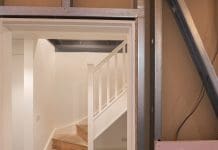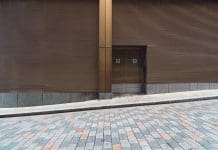There are numerous factors that cause poor temperature control in buildings. Premier Guarantee explain what can be done to stop dwellings from overheating
Over that past twelve months, there has been a significant increase of dispute resolution service notifications due to overheating of dwellings and in some common stairs. There are a number of factors which contribute to overheating, and as energy efficient building materials are more commonly used, its installation can have an impact.
How do buildings overheat?
There are a number of factors or gains that cause overheating; these are solar gains, internal gains and thermal mass.
What are solar gains?
Solar gains is an increase in temperature in a space, object or structure from the sun. This is usually more of an issue on south-facing facades.
What are internal gains?
This is heat emitted from a source which is controlled by air conditioning or ventilation and results in an increase in temperature of the surrounding space. Examples of this are waste heat from cooking, central heating pipes, hot water pipes and human activity.
What is thermal mass?
It is the ability of a material to absorb and store heat. There are two types:
- High, such as stone where the wall will absorb heat during the day and release at night;
- Low, such as timber frame or light gauge construction where the building will allow solar energy to pass through the construction. The gain on low thermal mass buildings will normally be when the sun is at its brightest.
How do dwellings usually meet compliance?
The most effective method to prevent overheating is to have full cross ventilation in the dwelling i.e. windows on opposite sides of a house that can be fully opened. However, practically this may not always be achievable.
- Shades and blinds: Where shades and blinds are specified in the SAP calculations, they should be installed on site at completion as they perform a part of the controlled work under Building Regulations;
- Overhangs: These can include brise soleil, or solid canopies and the more they project from the building, the more shading they provide;
- Solar reflective glass: Glazing has various coatings that can provide some protection against solar gain. Put simply, the darker the glass, the more resistant to gain; there are other films that can be added that provide further resistance.
What if dwellings do not have windows that open?
This can pose more of a problem as the solar gain can be reliant only on the mechanical ventilation system; there are formulas in SAP 2012 which are used to determine the overheating risk by using whole house ventilation alone without any windows that open.
Where to find guidance on compliance?
Overheating is measured in accordance with L1a of the Building Regulations. Advice on what causes overheating and what can be done to achieve compliance can be found in the Government’s Standard Assessment Procedure for Energy Rating of Dwellings, SAP 2012.
What are the buildings that pose the greatest risk?
Any dwelling which has a large amount of glazing on the south elevation is at risk; however to further elaborate, the riskiest buildings are those that are single sided with whole house ventilation systems.
How can you mitigate risk?
Firstly ensure that the SAP calculation is adhered to, where the calculations specify blinds or canopies, please make sure they are installed on site and correctly where the building has a mechanical ventilation system as the only ventilation method, the system should match the specification.
Does overheating apply to existing buildings?
No, it only applies to new dwellings.
Premier guarantee
Tel: +44 (0)800 107 8446
info@premierguarantee.co.uk
Please note: this is a commercial profile














An interesting article highlighting the growing problem of overheating in homes. The Zero Carbon Hub highlighted this is 2015, UK Green Building Council in 2015 and more recently the Committee on Climate Change in their statutory report to government.
ZCH estimated that 20% of all homes overheat and Professor Lomas of Loughborough University and his team have highlighted this is not a problem limited to the south of England either.
The British Blind and Shutter Association (BBSA) believes that there are two key issues – how we build to prevent overheating and how we cool those existing dwellings that are overheating.
Preventing overheating requires a holistic approach but the BBSA believe changes proposed to SAP with regards to shading could lead to more overheating, not less. For those buildings that are overheating , ventilation is key along with preventing solar gain but in urban areas with noise, pollution and the urban heat island effect passively venting hot air with cooler air is a real challenge.
As the article above states solar shading is a way of reducing overheating (particularly external shading) and recent research on overheating flats in London by London South Bank University has shown dramatic reductions in internal temperatures.